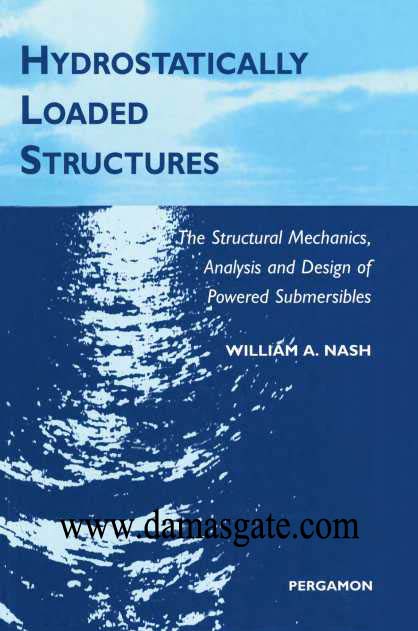Hydrostatically Loaded Structures
HYDROSTATICALLY LOADED
S TRUCTURES
The Structural Mechanics, Analysis and Design of Powered Submersibles
HYDROSTATICALLY LOADED
STRUCTURES
The Structural Mechanics, Analysis and Design of Powered Submersibles
WILLIAM A. NASH, Ph.D.
Professor of Civil Engineering, University of Massachusetts, Amherst, MA, USA

PREFACE
Hydrostatically Loaded Structures introduces the reader to the structural mechanics, analysis, and design of submersibles intended for exploration of
the ocean and lake depths. Such trips could well be for location of mineral resources, inspection of submerged portions of off-shore towers for oil drill- ing platforms, inspection of ocean bottom pipelines, carrying tourists on un- derwater adventures, carrying commercial cargo, and other uses yet to be found.
Design of the hydrostatically loaded vehicles involved presents many problems not encountered in design of land-based systems. Not only are lo- calized normal pressures very large, but most of the structural systems are extremely sensitive to initial geometric imperfections. Relative small de- partures from the nominal geometry become very important. For example, small departures from true circularity of a cylindrical or spherical pressure hull greatly diminishes its capability to descend to great depths. Residual stresses often decrease the load carrying capability of the system. Confirma- tion of any mathematical analysis of structural behavior must be obtained by comprehensive experimental programs.
The author's interest in structural behavior of submersible systems ex- tends over a number of decades. The present book is the outgrowth of a graduate level course that he has given a number of times over the years. To effectively utilize this book, the reader must necessarily have taken a first
course in Strength of Materials, and preferably, a second course in that area, or, alternately, a course in Theory of Elasticity. Each chapter ends with nu- merous references, together with a bibliography listing (and often briefly summarizing) other publications. These two listings are of equal importance
but space does not permit incorporating all items in the bibliography into the detailed text. Nor does space permit discussions of shell dynamics, an obvi-
ously important topic. Much of the book was written while the author was a visiting professor at
the Technical University of Darmstadt, Germany. Thanks must go to the Al- exander von Humboldt Foundation of Bonn for making that stay possible, and to the faculty in Darmstadt for its hospitality.
The author is particularly indebted to Mrs. Pamela Stephan for careful preparation of the computer-generated figures, text formatting, and layout. Thanks also go to Mrs. Kl'istina Schmid for much of the typing of the text. Lastly, the author is deeply indebted to his wife, Verna B. Nash, for her pa- tience and encouragement during the preparation of the manuscript.
William A. Nash
Amherst, Massachusetts April 1995
Download
*